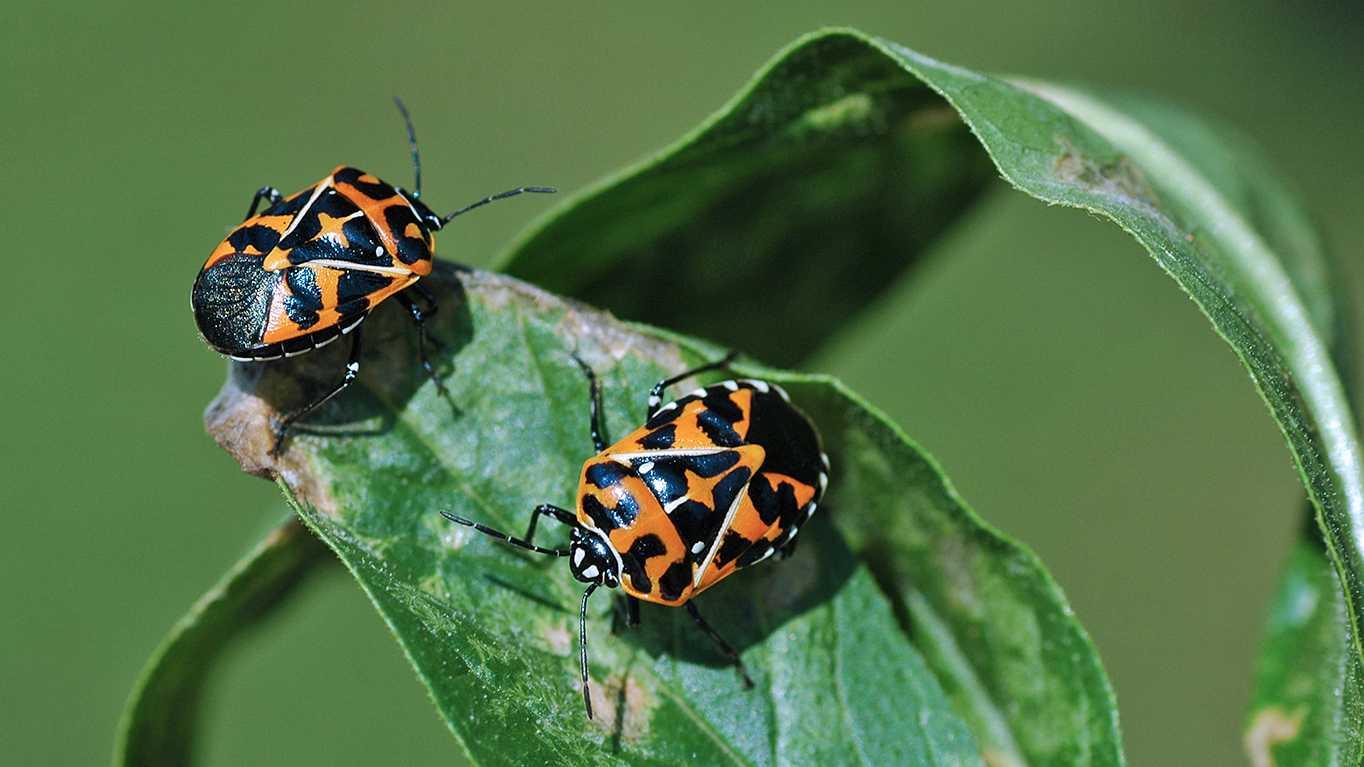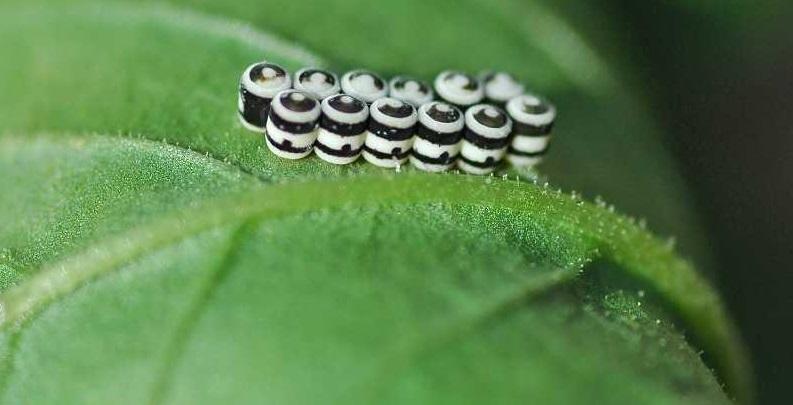This pest is most often found on cabbage family members (broccoli, cauliflower, collards, kale, horseradish, etc.) It is very partial to cleome, an annual flower. It is a true bug (has a triangular-shaped thorax) and sucks leaf sap leaving small white spots known as stipples. Leaves wilt and turn brown from prolonged feeding.
Appearance
- Eggs: Tiny white barrels encircled by black bands with a black crescent on top. Laid in small clusters arranged in rows of six on leaf undersides.
- Nymphs: Rounded and black, with pale green markings which soon turn brilliant red and yellow. Five instars (growth stages between two periods of molting in the development of a nymph).
- Adults: Shield-shaped body, up to 3/8" long, brightly colored, typically black and yellow or black and red— color patterns vary with the season.


